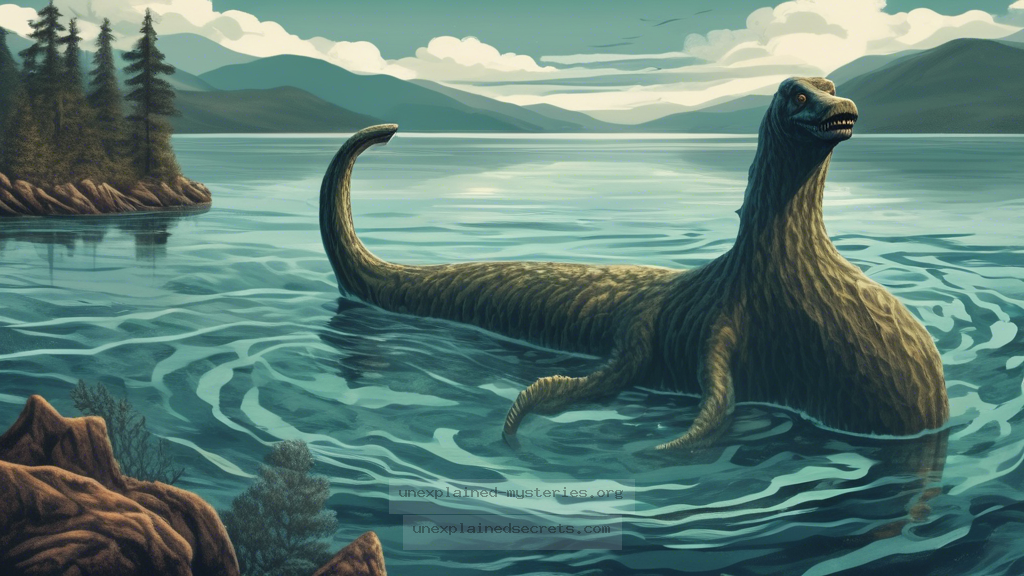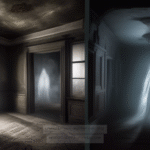What Secrets Lie Beneath the Surface of Loch Ness? Unraveling the Mysteries of Sonar Detections
What Secrets Lie Beneath the Surface of Loch Ness? Unraveling the Mysteries of Sonar Detections
The Loch Ness Monster, often affectionately referred to as “Nessie,” is one of the most enduring and captivating mysteries in the realm of cryptozoology. For decades, enthusiasts have reported sightings, captured photographs, and even conducted scientific expeditions in pursuit of this elusive creature. One of the most intriguing aspects of the Loch Ness phenomenon is the use of sonar technology to detect potential anomalies beneath the surface of this deep Scottish loch. But what do these sonar detections really mean? Are they evidence of a prehistoric creature lurking in the depths, or could they be misinterpretations of natural phenomena? In this post, we will delve into the world of sonar detections at Loch Ness, exploring the history, theories, practical implications, and much more. 🌊
Historical Context of Loch Ness Monster Sightings
The legend of the Loch Ness Monster dates back to ancient times, with the first recorded sighting in 565 AD by St. Columba, who reportedly encountered a “water beast” in the loch. However, it wasn’t until the 1930s that Nessie gained widespread notoriety, particularly after the publication of a famous photograph known as the “Surgeon’s Photo” in 1934. This image purportedly showed the creature’s head and neck emerging from the water, igniting a media frenzy and sparking public interest in the mystery of Loch Ness.
As interest in the loch grew, so did the number of reported sightings. By the 1960s, the introduction of sonar technology allowed researchers to investigate the depths of Loch Ness in ways never before imagined. This marked a significant turning point in the search for Nessie, as scientists began to utilize advanced equipment to scan for signs of life beneath the surface.
The Role of Sonar in Loch Ness Research
Sonar, which stands for Sound Navigation and Ranging, utilizes sound waves to detect objects underwater. By emitting sound pulses and measuring the time it takes for them to bounce back, researchers can create detailed images of the underwater landscape and identify potential anomalies. In the context of Loch Ness, sonar has played a crucial role in attempts to locate the fabled creature.
Over the years, various expeditions have employed sonar technology, including the famous Loch Ness Investigation Bureau (LNIB) in the 1960s and the more recent “Nessie 2020” project, which aimed to use modern sonar technology to explore the loch. These projects have produced a wealth of data, sparking excitement but also debate regarding the findings.
Core Concepts: What Have Sonar Detections Revealed?
Sonar detections in Loch Ness have yielded a range of findings, from schools of fish to underwater structures and mysterious blobs. One notable sonar detection occurred during a 1987 survey known as Operation Deepscan, which involved a fleet of boats equipped with sonar devices scanning the loch’s depths. The expedition reported multiple sonar contacts that suggested the presence of large, unidentified objects.
While some researchers interpreted these sonar anomalies as potential evidence of a large creature, others have pointed out that such detections can arise from natural formations, underwater vegetation, or even the movement of boats and debris. This raises an important question: how can we differentiate between genuine signs of Nessie and benign underwater phenomena?
Practical Implications of Sonar Findings
Understanding the implications of sonar findings is crucial for both researchers and enthusiasts. The presence of large sonar anomalies could indicate something significant lurking in the loch, but it is essential to approach these findings with caution. For instance, the echoes produced by the sonar can be influenced by various factors, including water temperature, sediment, and even the angle of the sonar beam.
Moreover, sonar data alone cannot confirm the existence of a creature. It serves as a tool for guiding further investigation, prompting researchers to explore potential leads while remaining grounded in scientific reasoning. By combining sonar data with biological studies, researchers can enhance their understanding of Loch Ness and its ecosystem.
Alternative Perspectives: Skepticism and Criticism
Despite the excitement surrounding sonar detections, skepticism remains prevalent in the scientific community. Many experts argue that the evidence for the Loch Ness Monster is anecdotal and lacks rigorous scientific validation. Critics often point out that sonar anomalies can be misinterpreted, and the lack of concrete physical evidence, such as bones or carcasses, undermines the legitimacy of claims regarding Nessie’s existence.
Furthermore, some skeptics emphasize the role of cultural and psychological factors in the phenomenon. The Loch Ness Monster serves as a compelling narrative that captivates the imagination, leading people to interpret ambiguous sonar data through the lens of their beliefs and expectations. This phenomenon, known as confirmation bias, can skew perceptions and lead to the misinterpretation of sonar findings.
Common Misconceptions about Sonar and Loch Ness
One of the most common misconceptions is that any sonar detection in Loch Ness is indicative of a large creature like Nessie. In reality, sonar technology can pick up a vast array of underwater objects, and many detections can be attributed to natural phenomena. For example, schools of fish often create significant sonar returns, leading some to jump to conclusions about the presence of a large aquatic predator.
Additionally, the environment of Loch Ness itself is unique, with its deep, murky waters and complex underwater geography. The interplay of these factors can lead to unusual sonar readings that may not directly correlate with living creatures. Understanding these nuances is crucial for interpreting sonar data accurately and avoiding sensationalism.
Best Practices for Investigating Loch Ness
For those interested in investigating the mysteries of Loch Ness further, several best practices can enhance the quality of research and contribute to a more informed understanding of the phenomena at play. Here are some essential strategies:
- Utilize a variety of research methods: Combining sonar technology with underwater cameras, biological sampling, and historical research can provide a more comprehensive view of Loch Ness.
- Engage with local experts: Collaborating with local historians, ecologists, and scientists can yield valuable insights and context for ongoing investigations.
- Maintain a skeptical mindset: Approach findings with caution and prioritize empirical evidence over anecdotal claims. This can help ground research in scientific methodology.
- Document and analyze data rigorously: Keeping detailed records of sonar readings, sightings, and environmental conditions can aid in identifying patterns and anomalies.
Future Developments and Ongoing Research
The exploration of Loch Ness is far from over, with ongoing research and technological advancements continually reshaping our understanding of this enigmatic body of water. Recent innovations in sonar technology, such as 3D imaging and autonomous underwater vehicles (AUVs), hold promise for deeper exploration and more accurate data collection.
Moreover, the advent of citizen science initiatives has allowed enthusiasts to contribute to research efforts, engaging a broader audience in the quest to uncover the truth behind the Loch Ness Monster. As collaborations between scientists, historians, and the public continue to grow, the potential for new discoveries remains high.
Conclusion: The Enduring Mystery of Loch Ness
The question of what secrets lie beneath the surface of Loch Ness continues to captivate and intrigue people worldwide. Sonar detections have provided tantalizing glimpses into the depths of this ancient loch, yet they also raise questions about interpretation, evidence, and the nature of belief. While skeptics urge caution and demand concrete proof, enthusiasts remain hopeful that Nessie may someday reveal herself.
As research evolves and new technologies emerge, the mystery of Loch Ness serves as a reminder of our innate curiosity and the allure of the unknown. Whether one views Nessie as a creature of myth or a real entity, the journey of exploration and discovery is what makes this enigma so compelling. In the end, Loch Ness remains a symbol of the mysteries that lie just beneath the surface, waiting to be uncovered. 🐉
Other Articles
Recent Posts
- What Happened to Flight MH370? The Conspiracy Theories That Still Haunt Us
- What Secrets Lurk Within the Walls of the Infamous Trans-Allegheny Lunatic Asylum?
- What Evidence Supports the Existence of Bigfoot in the Pacific Northwest?
- What Happened to the Indus Valley Civilization? Unraveling the Mysteries of Ancient Urban Life
- Can Telepathy Be Scientifically Proven Through Laboratory Evidence?







